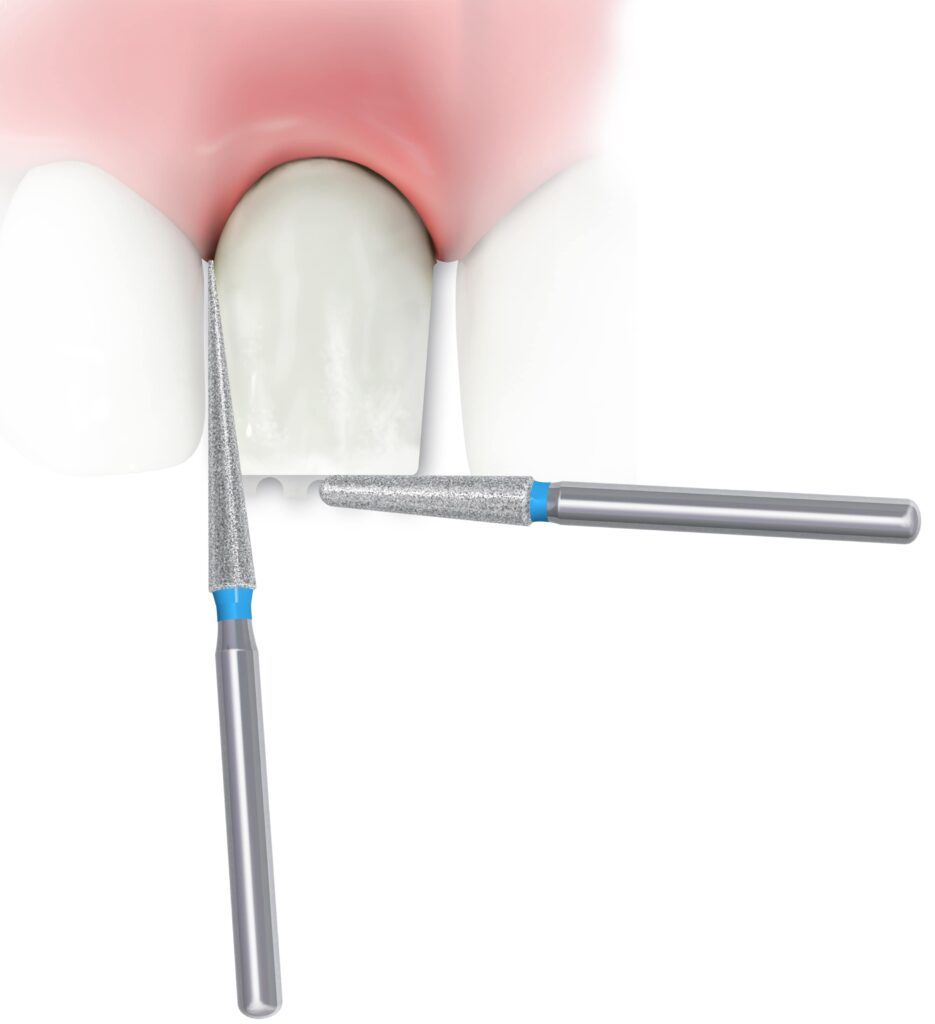For individuals who are unhappy with the shape or size of their teeth, enameloplasty may be a viable solution. This cosmetic dental treatment involves removing small amounts of enamel from the surface of teeth to achieve a more desirable shape and size. enameloplasty can be used to correct a variety of imperfections, including uneven teeth, overlapping teeth, and pointy teeth. It is a quick and painless procedure that can be completed in just one office visit, making it an ideal option for individuals with busy schedules. With its ability to create a more balanced and harmonious smile, enameloplasty has become an increasingly popular cosmetic dental treatment in recent years.
What is an Enameloplasty?
Enameloplasty, also known as tooth reshaping or contouring, is a cosmetic dental procedure that involves removing small amounts of enamel from the surface of teeth to improve their appearance. Enamel is the hard, outer layer of the tooth that protects the underlying dentin and pulp. Enameloplasty is typically used to reshape teeth that are misshapen, chipped, or slightly overlapping. During the procedure, a dental professional will use a dental drill or laser to remove small amounts of enamel, sculpting the tooth into a more desirable shape. The procedure is relatively quick and painless and can often be completed in a single office visit. Enameloplasty is a conservative and non-invasive procedure, as only a small amount of enamel is removed. However, it should be noted that this procedure is not appropriate for all dental conditions, and a dental professional should evaluate a patient’s individual situation to determine if enameloplasty is a suitable treatment option.
Candidates for Enameloplasty
An ideal candidate for enameloplasty is someone who has small cosmetic imperfections in their teeth, such as slightly overlapping teeth, small chips or irregularities, or teeth that are slightly too long or pointed. Candidates should have good oral health and sufficient tooth enamel to allow for the removal of a small amount of enamel without affecting the overall strength and function of the teeth.
On the other hand, individuals who have larger dental issues or more severe cosmetic imperfections, such as deeply chipped, cracked or misshapen teeth, may not be suitable candidates for enameloplasty. Additionally, individuals with dental conditions such as tooth decay, gum disease, or weakened tooth enamel due to acid erosion or teeth grinding may not be candidates for this procedure. In such cases, other restorative or cosmetic dental treatments may be more appropriate to address the patient’s dental concerns.
It is important for individuals who are considering enameloplasty to consult with a qualified dental professional who can evaluate their individual dental health and determine if they are a suitable candidate for the procedure.
When evaluating a patient for enameloplasty, a dentist will typically perform a comprehensive dental exam to assess the overall health and condition of the patient’s teeth and gums. During the exam, the dentist will evaluate the size and location of the cosmetic imperfections in the patient’s teeth, as well as the overall shape and alignment of the teeth.
To determine if a patient is an ideal candidate for enameloplasty, the dentist will consider a variety of factors, including:
- Amount of tooth enamel: The dentist will evaluate the amount of tooth enamel present to ensure that there is enough enamel to remove without compromising the strength and structure of the tooth.
- Dental health: The dentist will assess the overall dental health of the patient, including the presence of cavities, gum disease, or other dental issues that may need to be addressed before the enameloplasty procedure.
- Cosmetic goals: The dentist will discuss the patient’s cosmetic goals and expectations for the procedure to ensure that enameloplasty is an appropriate treatment option to achieve those goals.
- Bite alignment: The dentist will evaluate the alignment of the patient’s bite to ensure that removing enamel from one tooth will not negatively affect the overall bite alignment.
Based on these factors, the dentist will determine if enameloplasty is an appropriate treatment option for the patient’s specific dental needs and goals. If enameloplasty is not a suitable treatment option, the dentist may recommend alternative cosmetic or restorative dental procedures to address the patient’s concerns.
The Enameloplasty Procedure
The steps of an enameloplasty procedure can vary depending on the specific needs and goals of the patient. However, the general steps are as follows:

- Consultation: The first step of an enameloplasty procedure is a consultation with a dental professional. During the consultation, the dentist will evaluate the patient’s dental health, discuss their cosmetic goals, and determine if enameloplasty is a suitable treatment option.
- Preparation: Once the dentist has determined that the patient is a good candidate for enameloplasty, they will prepare the patient’s teeth for the procedure. This typically involves cleaning and drying the teeth, and possibly taking x-rays or making impressions of the teeth.
- Enamel removal: The dentist will use a dental drill or laser to remove small amounts of enamel from the surface of the teeth. This process is used to reshape the teeth and create a more aesthetically pleasing smile. The dentist will carefully monitor the amount of enamel being removed to ensure that the tooth’s structure and function are not compromised.
- Shaping and smoothing: After the enamel has been removed, the dentist will shape and smooth the teeth using various dental instruments to create a more uniform and balanced appearance. The patient will be able to see the results immediately.
- Finishing touches: Once the teeth have been shaped and smoothed, the dentist may use a polishing instrument to further refine the surface of the teeth and give them a smooth, glossy finish.
During the enameloplasty procedure, patients can expect to feel little to no discomfort, as the procedure is typically performed using a local anesthetic to numb the area. After the procedure, patients may experience some sensitivity to hot and cold temperatures, but this should subside within a few days. It is important for patients to follow the dentist’s aftercare instructions, including maintaining good oral hygiene and avoiding hard or crunchy foods for a few days following the procedure. The results of enameloplasty are permanent since enamel does not grow back once it has been removed.
In Conclusion
Enameloplasty is a simple yet effective cosmetic dental procedure that can help patients achieve a more beautiful and balanced smile. With minimal discomfort and downtime, patients can see the results of enameloplasty immediately and enjoy a more confident smile for years to come. However, it is important for patients to work with a qualified dental professional to determine if they are a suitable candidate for the procedure and to ensure that the treatment is performed safely and effectively. By carefully considering all options and working with a trusted dental provider, patients can achieve the smile they have always wanted with enameloplasty.

Dr. Sadati possesses extensive experience in all aspects of advanced restorative dentistry, with an emphasis in cosmetic and implant dentistry. He has attained Accredited Fellow status in the American Academy of Cosmetic Dentistry (AACD), the most rigorous, demanding credentialing process in the world. He is the only AACD Accredited Fellow in South Florida.


